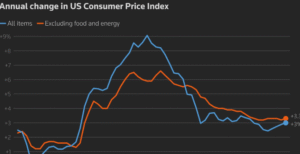$BTC $GLD $SPX
#Bitcoin #Crypto #Gold #Treasury #BTCreserve #NationalDebt #Innovation #FinancialMarkets #Blockchain #USEconomy #GoldMarket #BTCvsGold
Senator Cynthia Lummis has made waves by proposing that the United States sell its gold reserves to establish a formidable Bitcoin reserve worth $92 billion. The Republican Senator from Wyoming, an outspoken advocate of Bitcoin and blockchain technology, believes that such a move could propel the U.S. further into leading the financial innovation space. Positioned amidst growing global interest in cryptocurrencies, Lummis’s plan seems to align with the broader trend of Bitcoin adoption while signaling a pivotal shift in how the U.S. government could approach national reserves and technological advancement. This shift in thinking represents a dramatic departure from the status quo—in which the U.S. has long hoarded physical commodities, like gold, as both a reserve asset and a hedge in times of economic instability.
Lummis has indicated that selling U.S. gold could not only help secure a significant Bitcoin reserve but also contribute to reducing the national debt, which currently stands close to $33 trillion. This proposal takes on additional weight as the nation contends with inflationary pressures and debates surrounding the national debt ceiling. Lummis believes that Bitcoin, offering a decentralized, digital, and scarce asset, stands as the 21st-century alternative to gold, which has long been praised for its stability and utility as a hedge during tumultuous markets. Advocates argue that gold has become less relevant in the modern economy, which is increasingly dependent on digital transactions, blockchain technology, and decentralized finance (DeFi) instruments. By transitioning some reserves into Bitcoin, the U.S. could move ahead of other nations when it comes to blockchain leadership and financial technology adoption.
However, the proposal is not without controversy. Critics argue that Bitcoin’s notorious volatility, particularly relative to the long-standing stability of gold, raises significant concerns about the risks involved. Gold, currently a $12 trillion market, has consistently provided safe-haven stability during economic downturns, while Bitcoin, though it has had moments of strong appreciation, continues to experience large price fluctuations. In 2021 alone, Bitcoin saw wild pricing swings between $30,000 and nearly $70,000. Goldman Sachs reported that $BTC’s volatility is around 8 times higher than that of $GLD (gold). Increasing Bitcoin reserves while abandoning traditional assets like gold could expose the U.S. Treasury to periods of dramatic asset depreciation, adding to the existing economic uncertainty in traditional financial markets.
Nevertheless, Lummis’ proposal aligns with a rising pro-crypto sentiment, one that was vocalized publicly during Donald Trump’s time in office. Although Trump himself has expressed skepticism toward Bitcoin in previous years, his administration’s policies were seen as relatively friendly to blockchain innovation and cryptocurrency infrastructure. This environment could potentially lay the groundwork for future initiatives if similar leadership gains influence. Should Lummis’ Bitcoin proposal succeed in gaining traction, the U.S. Treasury could become an even more central player in the global digital financial system, with broad implications for the valuation of not just Bitcoin, but also for commodities like gold and the broader stock market. It could have lasting impacts on sectors like technology ($SPX) and the financial services industry, which continue to observe Bitcoin’s rise with vested interest.










Comments are closed.